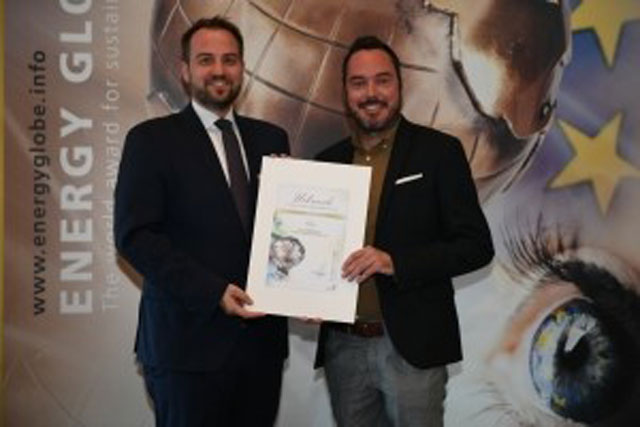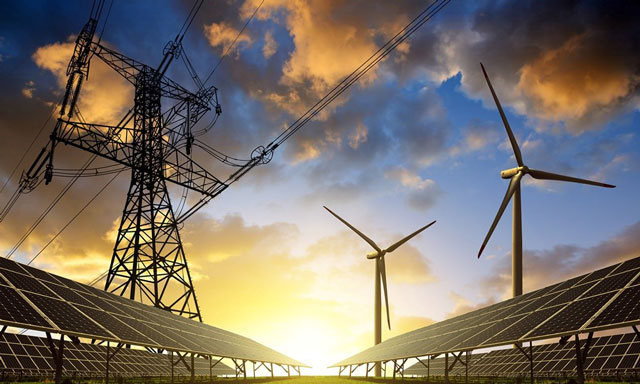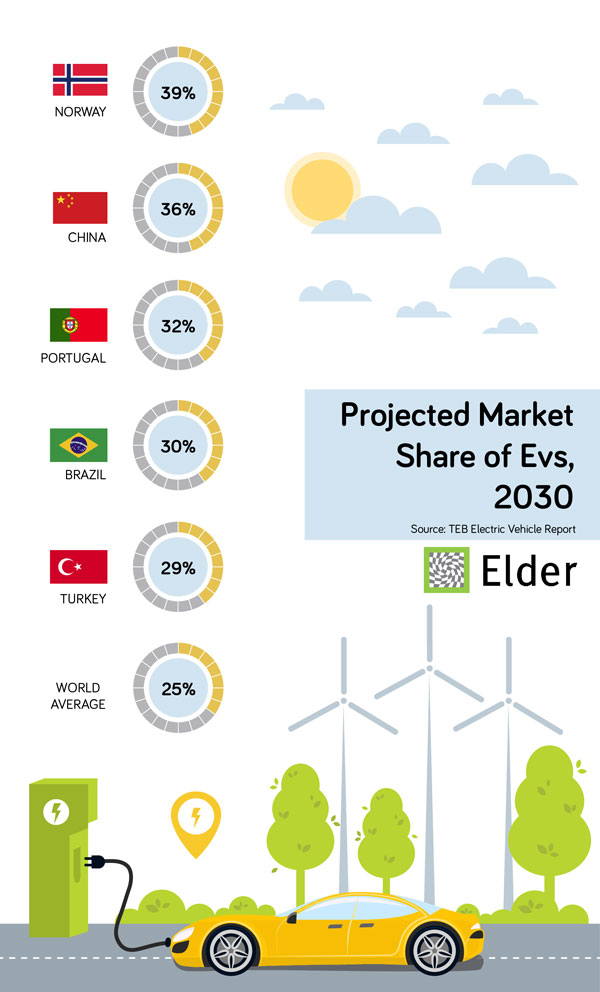
The share of natural gas in Turkey’s electricity generation decreased to 17.2 percent in the first four months of the year, while hydropower and wind plants increased their contribution to power productions.
Based on data from the power transmission company Türkiye Elektrik İletim, Anadolu Agency calculated that the country’s total electricity production declined by one percent on an annual basis to 94.8 billion kilowatt-hours (kWh) in January-April.
Natural gas plants produced 16.34 billion kWh of energy in the said period. A year ago, the share of natural gas in electricity production was 30.7 percent.
The shares of wind plants and geothermal plants were 8 percent and 3 percent, respectively.
Data showed that hydropower plants captured the largest share in electricity generation with 34.2 percent as their output stood at 32.4 billion kWh.
Source: Hurriyet Daily News

Established in 1999, the Energy Globe Award is the world’s most prestigious environmental award. Endorsed by Michael Sheen and Kofi Annan, this international competition attracts approximately 6000 project entries from more than 180 countries around the globe. Energieinstitut an der Johannes Kepler Universität Linz submitted PEAKapp project for the Energy Globe Award in category “Fire
ELDER is one of the partners in the project PEAKapp consortium which is composed of a balanced team of complementary organizations including electricity retailers, an electricity branch association, two software developers, highly specialized research and innovation centers and universities. Consortium has strong expertise in the fields of smart metering, smart grid, software development, business development and behavioral science to collectively tackle the challenge of developing of smart services to better utilise electricity from renewable sources.
The Energy Globe Certificate is an internationally recognized hallmark for sustainability. In some countries the National Award is split into categories, and the winners not only get the certificates but even the popular trophies. PEAKapp contended in the Upper Austrian Energy Globa version for a distinguished regional project that conserves resources such as energy, utilizes renewable or emission-free sources.
A high number of premium sustainable projects from the region competed in five categories: “Earth”, “Youth”, “Luft”, “Wasser” and “Sustainable Plastics”. The overall winner of Energy Globe Award Oberösterreich 2019 was Tp3 Architekten with its school refurbishment project and EnergieAG´s project connecting heat pumps and district heating in the city of Gmunden.
Under this category, the project coordinator Energieinstitut an der Johannes Kepler Universität Linz submitted the PEAKapp project as a cooperative research and demonstration project. Nine other projects were nominated for the main award in the category and received the Honourable Mention of the Jury and the certificate.

Despite significant progress in recent years, the world is falling short of meeting the global energy targets set in the United Nations Sustainable Development Goals (SDG) for 2030. Ensuring affordable, reliable, sustainable and modern energy for all by 2030 remains possible but will require more sustained efforts, particularly to reach some of the world’s poorest populations and to improve energy sustainability, according to a new report produced by the International Energy Agency (IEA), the International Renewable Energy Agency (IRENA), the United Nations Statistics Division (UNSD), the World Bank and the World Health Organization (WHO).
Notable progress has been made on energy access in recent years, with the number of people living without electricity dropping to roughly 840 million from 1 billion in 2016 and 1.2 billion in 2010. India, Bangladesh, Kenya and Myanmar are among countries that made the most progress since 2010. However, without more sustained and stepped-up actions, 650 million people will still be left without access to electricity in 2030. Nine out of 10 of them will be living in sub-Saharan Africa.
Tracking SDG7: The Energy Progress Report also shows that great efforts have been made to deploy renewable energy technology for electricity generation and to improve energy efficiency across the world. Nonetheless, access to clean cooking solutions and the use of renewable energy in heat generation and transport are still lagging far behind the goals. Maintaining and extending the pace of progress in all regions and sectors will require stronger political commitment, long-term energy planning, increased private financing and adequate policy and fiscal incentives to spur faster deployment of new technologies.
The report tracks global, regional and country progress on the three targets of SDG7: access to energy and clean cooking, renewable energy and energy efficiency. It identifies priorities for action and best practices that have proven successful in helping policymakers and development partners understand what is needed to overcome challenges.
Here are the key highlights for each target. Findings are based on official national-level data and measure global progress through 2017.
Access to electricity: Following a decade of steady progress, the global electrification rate reached 89 percent and 153 million people gained access to electricity each year. However, the biggest challenge remains in the most remote areas globally and in sub-Saharan Africa where 573 million people still live in the dark. To connect the poorest and hardest to reach households, off-grid solutions, including solar lighting, solar home systems, and increasingly mini grids, will be crucial. Globally, at least 34 million people in 2017 gained access to basic electricity services through off-grid technologies. The report also reinforces the importance of reliability and affordability for sustainable energy access.
Clean cooking: Almost three billion people remain without access to clean cooking in 2017, residing mainly in Asia and Sub-Saharan Africa. This lack of clean cooking access continues to pose serious health and socioeconomic concerns. Under current and planned policies, the number of people without access would be 2.2 billion in 2030, with significant impact on health, environment, and gender equality.
Renewables accounted for 17.5% of global total energy consumption in 2016 versus 16.6% in 2010. Renewables have been increasing rapidly in electricity generation but have made less headway into energy consumption for heat and transport. A substantial further increase of renewable energy is needed for energy systems to become affordable, reliable and sustainable, focusing on modern uses. As renewables become mainstream, policies need to cover the integration of renewables into the broader energy system and take into account the socio-economic impacts affecting the sustainability and pace of the transition.
Energy efficiency improvements have been more sustained in recent years, thanks to concerted policy efforts in large economies. However, the global rate of primary energy intensity improvement still lags behind, and estimates suggest there has been a significant slowdown in 2017 and 2018. Strengthening mandatory energy efficiency policies, providing targeted fiscal or financial incentives, leveraging market-based mechanisms, and providing high-quality information about energy efficiency will be central to meet the goal.
Source: International Energy Agency

Over 2 million electric vehicles were sold in 2018, up from just a few thousand in 2010, and there is no sign of slowing down. We expect annual passenger EV sales to rise to 10 million in 2025, 28 million in 2030 and 56 million by 2040.
By 2040, we expect 57% of all passenger vehicle sales, and over 30% of the global passenger vehicle fleet, will be electric.
Sales of internal combustion passenger vehicles have already peaked, and may never recover unless EV growth falters, or major economies such as China invest in significant stimulus programs.
Battery prices keep falling. As a result, we expect price parity between EVs and internal combustion vehicles (ICE) by the mid-2020s in most segments, though there is wide variation between geographies and vehicle segments.
Emissions regulations are getting tighter, both at the city level and the national level and automakers are responding with a surge of new EV models launching in the next 5 years.
Despite the rapid growth in sales, there are over a billion vehicles on the road and EVs are still less than 0.5% of the global vehicle fleet. Changing this over will take time. The total passenger vehicle fleet continues to rise to 1.68 billion vehicles in 2040, driven mostly by demand in emerging economies. This is lower than many other forecasters, as we see ride-hailing, car-sharing urbanisation, demographics and – eventually – autonomy, cut deeper into vehicle demand growth, particularly in the 2030s.
By 2040 we expect 500 million passenger EVs on the road and over 40 million commercial EVs. The internal combustion passenger vehicle fleet continues to grow until 2030 before declining.
While much of the attention to date has been on passenger vehicles, as battery technology continues to improve and more models become available, electrification will spread to other segments of road transport.
In this year’s report we did new, detailed analysis on the relative economics of different drivetrain technologies for light, medium and heavy commercial vehicles. Each of these vehicle classes operates in different duty cycles depending on the application.
The electrification of the global bus fleet is already well underway with over 400,000 electric buses on the road. Commercial electric van and truck sales are set to accelerate in the 2020s.
By 2040, we expect 56% of light commercial vehicle sales and 31% of medium commercial vehicles in China, the U.S. and Europe to be electric.
Source: BNEF

The adoption of blockchain technology in the energy sector will generate over $3 billion by 2025 owing to an increase in deployment in the power, oil and gas sectors, according to Global Market Insights.
Worldwide, the deployment of blockchain technology in energy-related applications has become a trending subject of sorts among industry giants as well as the start-up investor community, with applications ranging from grid transactions, financing and transparency in supply chain. Advancements in the technology have resulted from widespread efforts to replace outdated and less secure trading and documentation platforms through digital transformation. Blockchain is deemed ideal for the energy segment since it can enable the creation of automated, auditable and transparent records of generated power and its subsequent consumption.
Even in the oil & gas industry, legacy systems are being overhauled for implementing more reliable and cutting-edge digital systems, particularly to improve operational efficiency and security. Blockchain is now pegged as one of the prime technology platforms to help energy companies achieve their digitization goals and reach a higher number of consumers.
In recent years, more and more endeavors have been taken up to increase the contribution of renewables in the overall energy mix of power grids across regions, making it essential to adopt modern grid management technologies. To support the consumption of renewables, numerous green energy purchase programs are being developed for general consumers and applied throughout North America and Europe, expanding the scope of blockchain technology in energy segment.
Source: Smart Energy International

China and the United States remain the world’s most attractive renewable energy markets, according to EY’s latest Renewable Energy Attractiveness Index (RECAI) report published earlier this month, while France moved into third spot and India fell out of the top 3.
EY’s (formerly Ernst Young) bi-annual Renewable Energy Attractiveness Index is published twice a year and ranks 40 countries on the attractiveness of their renewable energy investment and deployment opportunities, providing one of the most succinct and respected insights into global renewable energy development around. Now in its 53rd edition and 17th year, EY’s latest RECAI highlights the industry’s march towards what EY describes as “a new phase of subsidy-free growth across the world.” Specifically, EY expects to see more and more projects competing in the market on their own economic and environmental merits, rather than bolstered by government support.
“In this more complex, subsidy-free environment, renewable developers must work harder and smarter to find the revenue certainty they need to finance or monetize their efforts,” explained Ben Warren, EY Global Power and Utilities Corporate Finance Leader and RECAI Chief Editor.
“Europe has led the way with unsubsidized projects in areas with good renewable resources, and multiple projects across the Nordics, UK, and Spain are being developed which are backed by private investment and corporate PPAs to provide the required stability.
“For the renewable energy market overall, however, a future without government subsidy is one that will no longer be vulnerable to sudden shifts in policy, or to retroactive changes to promised tariffs. Instead, it will be one where market forces impose discipline, drive efficiencies and accelerate the cost reductions that have allowed the sector to stand on its own two feet.”
Source: Clean Technica
World Energy Investment 2019
Global energy investment stabilised after 3 years of decline. Energy investment remained at USD 1.85 trillion in 2018 while a rise in fossil fuel supply investment offset lower power and stable efficiency spend. Despite the shift, power was the largest sector for the third year in a row.
Please click here to read the full report.

